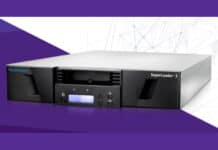With the recent launch of its SAP S/4HANA Cloud in the country, SAP is actively preparing its partner ecosystem to drive the growth of the offering in the India market. Anthony McMahon, Senior Vice President, General Business (SME) & Channels, SAP Asia Pacific Japan, shares more details
SAP, which recently conducted its annual Partner Summit in India, has recruited a lot of new partners as the company is starting to grow its cloud portfolio. A large proportion of these partners are new to SAP, for SAP SuccessFactors or Customer Engagement and Commerce – which is SAP Hybris suite or SAP Ariba. Aditionally, the company has also launched SAP S/4HANA Cloud in India, which signifies a big milestone in terms of market opportunities in wake of its ERP suite being delivered in the country. In the SMB space, SAP expects the solution to gain traction rapidly.
Anthony McMahon, Senior Vice President, General Business (SME) & Channels, SAP Asia Pacific Japan, shares, “There are some elements around it, such as the intelligent ERP which looks at new and transformational ways of interacting with our ERP system. There’s an overall improvement, not just the UI, but also the ability to engage with voice assisted SAP CoPilot. It also offers the benefits of running dynamic business processes on HANA, which you get as a benefit of having the in-memory system where you can run both the transactional and analytical database all-in-one. And then integrating it to a broader intelligent suite, which is either connections to our cloud solutions or partners developing their own IP on the SAP Cloud Platform that could be industry-based extensions, or it could be functional enhancements, or it could even be the SAP Leonardo portfolio.”
The company deliberately tried to coincide the launch of this solution with its Partner Summit, due to its go-to-market approach being 100 per cent through partners for the SMB segment.
Adding to the significance of the launch for partners, he comments, “The traditional on-premise partners will now have a solution in the public cloud world, which they didn’t have before. I think it’s going to mean different things for different types of partners. The bottom-line is that we have the first intelligent cloud ERP offering in the market and a range of partners will benefit from this.”
Market adoption
SAP has observed that there are some markets where cloud consumption or cloud adoption is now the primary way of consuming its technology. For instance, in markets like Australia and New Zealand – both in large enterprises space and SMBs – the ACV (Annual Contract Value) of SAP’s cloud offering has now overtaken the on-premise business.
“I think it’s only a matter of time before it happens in Japan, followed by Korea. Markets like South East Asia and India are slightly behind and it’s not because the customers aren’t ready to adopt the technology. In some cases, we wanted to make sure that offerings like GST Readiness and some of the things that are required for the India market, are embedded in our roadmap before being launched here,” informs McMahon.
According to SAP, a large installed based customer that runs on-premise ERP, might go to a hybrid model where it might start with a private managed cloud by re-hosting its on-premise application onto an SAP managed cloud with the HANA Enterprise Cloud. Whereas, for the new SME customers, the company is witnessing willingness to go straight to public cloud.
“The existing installed base customers may look at a hybrid or managed cloud; and new customers, who are probably running a lot of disparate systems or basic accounting packages, are ready to go to cloud. But the willingness to go to cloud is also based on their need to be assured that they can still innovate on top of that application and get some visibility of the roadmap,” he says.
Partner ecosystem
In McMahon’s view, in this world of cloud, it’s not about the initial sale, or the long implementation cycle; its adoption and usage. If the customer is starting to get the promised value soon after going live, then they will continue using it. “We want to make sure that partners are rewarded if they are uncovering and developing their own opportunities. We have a program through our Deal Registration System (DRS) for new opportunities that a partner registers. We give partners an additional rebate for that new win for both cloud and on-premise. We have inceased the additional rebate from 10 per cent to 15 per cent in India. This will encourage partners to transition to the cloud model and invest in more sales and pre-sales. We think this is a huge market for the SME segment that our partners are not even tapping. We were initially in 16 non-metro cities, then we moved to 26 and this year we will get into 42. We can’t do that without partners,” informs McMahon.
For its other program, SAP has included a new partner performance incentive rebate; wherein, if partners exceed the targets, they get additional rebates for everything that they over-deliver on those targets. “When you combine the margins that our partners can get through the PartnerEdge program, the new rebates and the incentive program, we believe that’s a great, profitable commercial model for them to keep investing in the business,” he adds.
India market
Due to the highly distributed geography of India, there are multiple industry clusters. A large per cent of GDP is from the SMB space. SAP identifies this as an opportunity and a challenge. Some of the challenges include: having enough partners with industry knowledge, and consultants and to deliver a positive outcome. To address these, SAP is working with its partner ecosystem and government agencies to skill, reskill and upskill 1.5 million SAP consultants.
The company has also launched ‘i360’, a recent initiative around working with technical colleges and universities to enable and a set up lab where SAP can demonstrate some of the leading technologies on the SAP Leonardo platform. These technologies cover AI, Blockchain, Machine Learning and cloud analytics.
Commenting on emergence of new requirements in the market, and the role of new-age partners alongside traditional players, McMahon says, “Those partners that are born in the cloud, have built their business around services that are tuned towards a cloud-only world. However, there are some partners that are embracing emerging technologies from the outset – this may be an advantage. Besides, these partners are also maintaining and optimising their on-premise business. They are building capabilities for this hybrid world.”
Training and enablement
SAP has been involved in a lot of work prior to the launch of SAP S/4HANA Cloud through sales and pre-sales boot camps and webinars. “We’ve also been running and are about to run more delivery boot camps which are longer. We will conduct a lot of sales, pre-sales enablement, delivery enablement as well as our own awareness and marketing activities. We’ve also invested in a team – Partner Solution Center – and we work with our SAP Labs team, wherein we handhold the first few projects for the partners.”
Furthermore, SAP is trying to create partner solution packages, wherein SAP S/4HANA Cloud solution can be combined with some IP that partners have generated on SAP Cloud Platform, or they have embedded some intelligent technologies through SAP Leonardo. This will be followed by help in developing marketing and sales assets, go-to-market and awareness.
Thrust areas
SAP’s focus is on supporting partners by owning and driving digital-oriented marketing awareness that highlight that SAP has solutions relevant for SMEs. “We have to do that at a scale that is much higher in terms of lead generation we’ve done historically. We have to embed SAP as part of the buyer’s journey.”














